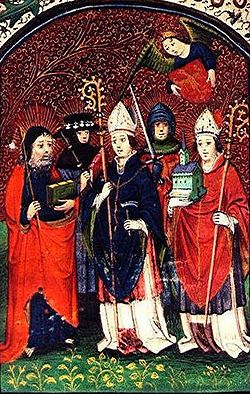
Saint-Ghislain is a city and municipality of Wallonia located in the province of Hainaut, Belgium.

Amandus, commonly called Saint Amand, was a bishop of Tongeren-Maastricht and one of the catholic missionaries of Flanders. He is venerated as a saint, particularly in France and Belgium.
Acarius, venerated as Saint Acarius, was a monk of Luxeuil Abbey who became Bishop of Doornik and Noyon, which today are located on either side of the Franco-Belgian border.

Saint Gudula was born in the pagus of Brabant. According to her 11th-century biography, written by a monk of the abbey of Hautmont between 1048 and 1051, she was the daughter of a duke of Lotharingia called Witger and Amalberga of Maubeuge. She died between 680 and 714.

The Archdiocese of Cambrai is a Latin Church ecclesiastical jurisdiction or archdiocese of the Catholic Church in France, comprising the arrondissements of Avesnes-sur-Helpe, Cambrai, Douai, and Valenciennes within the département of Nord, in the region of Nord-Pas-de-Calais. The current archbishop is Vincent Dollmann, appointed in August 2018. Since 2008 the archdiocese has been a suffragan of the Archdiocese of Lille.
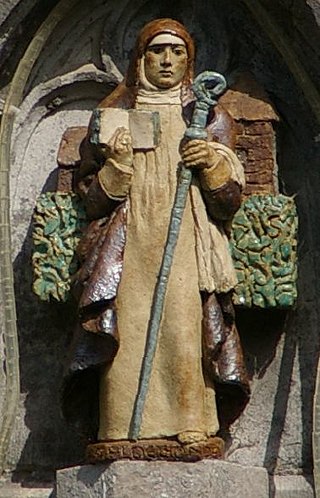
Aldegund, also Aldegundis or Aldegonde, was a Frankish Benedictine abbess who is honored as a saint by the Roman Catholic Church in France and by the Orthodox Church.

Liessies Abbey was a Benedictine monastery in the village of Liessies, near Avesnes-sur-Helpe, in the Archdiocese of Cambrai and the département of Nord, France.

Saint Waltrude is the patron saint of Mons, Belgium, where she is known in French as Sainte Waudru, and of Herentals, Belgium, where she is known in Dutch as Sint-Waldetrudis or -Waltrudis. Both cities boast a large medieval church that bears her name.
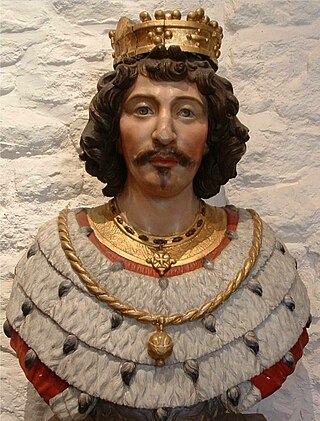
Vincent Madelgarius, aka Maelceadar, Benedictine monk, died 677. His feast day is September 20.
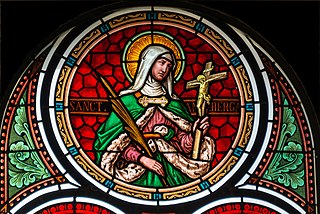
Saint Amalberga of Maubeuge was a Merovingian nun and saint who lived in the 7th century.
Saint Vindicianus (Vindician) was a bishop of Cambrai-Arras. His feast day is 11 March. He is called a spiritual follower of Saint Eligius.

Humbert of Maroilles was a Frankish monk, abbot, and saint. He founded Maroilles Abbey.

Amalberga of Temse was a Lotharingian noblewoman from the Frankish royal house of the Pippinids who is celebrated as a saint in the Roman Catholic Church and the Eastern Orthodox Church. She is especially venerated in Temse, Ghent, Munsterbilzen and other parts of Flanders. She received the veil from Saint Willibrord of Echternach.
Emebert was an early Bishop of Cambrai, in northern France; he is often identified with Bishop Ablebert of Cambrai.
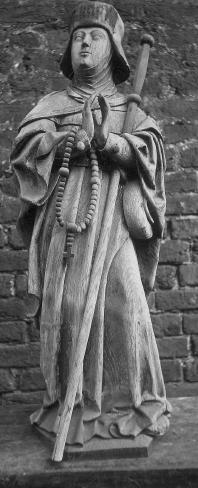
Reineldis was a saint of the 7th century, martyred by the Huns.

Saint Gaugericus, in French Saint Géry was a bishop of Cambrai, France.
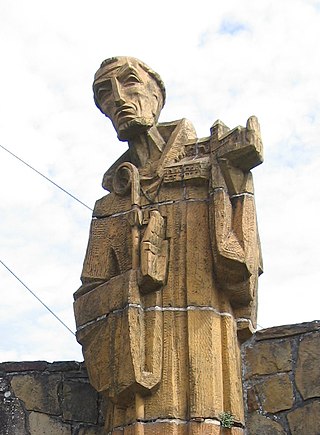
Saint Gérard founded Brogne Abbey and reformed eighteen others according to the Benedictine Rule.

Maubeuge Abbey was a women's monastery in Maubeuge, in the County of Hainaut, now northern France, close to the modern border with Belgium. It is best known today as the abbey founded by St. Aldegonde, still a popular figure of devotion in the region. It is thought to have possibly been where the young Jan Gossaert, a Renaissance-era painter known as Jan Mabuse, was educated, claimed by some to have been a native of the town of Maubeuge, which grew up around the abbey.

Aldetrude was a Christian saint and from 684 was abbess of Maubeuge Abbey in the County of Hainault, now in northern France. She is also known as Aldetrude de Maubeuge, Aldetrude of Maubod, Aldetrudis and Adeltrude.

Saint Madelberte of Maubeuge was a 7th-century nun related to the Merovingian dynasty. She became abbess of Maubeuge Abbey in the County of Hainaut, now in northern France near the Belgian border. She died in 705 or 706.
